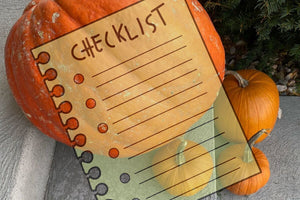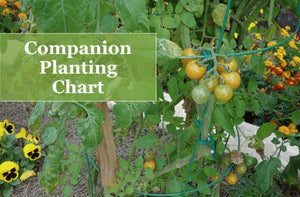Intercropping Demystified: Benefits, Types, and Guidelines Made Simple
TechniquesIntercropping is a farming technique that involves growing two or more crops together in the same space. Early civilizations from all over the world recorded their use of intercropping in their writings or traditions, but this isn’t just ancient history. The same strategies that have been used for millennia are still quite useful for the home gardener today.

What is Intercropping?
Intercropping is a sustainable gardening technique where two or more crops are grown together in the same space to maximize productivity and harmony in the garden. This ancient practice mirrors the way plants naturally grow in diverse ecosystems.
Unlike monoculture, intercropping allows gardeners to make the most of their garden space while enhancing soil health, managing pests naturally, and promoting biodiversity. Whether you're pairing fast-growing vegetables with slower-maturing ones or using companion planting to deter pests, intercropping remains a practical and effective strategy for home gardeners.

8 Benefits of Intercropping
Intercropping can help improve the health of both the plants and the soil of the garden. Gardeners can save money, time, and effort by choosing the right crops to grow in tandem.
- Pest control - Intercropping a plant that will repel insects or other pests from another crop that attracts those pests. For example, rye can protect soybeans, and mustard or alfalfa can protect strawberries from various insects. In addition to repellent intercropping, trap cropping can also help to control pests. A trap crop is planted around another crop to attract pests and keep the primary crop from being destroyed by the pests.
- Efficient resource use - Choosing mutually beneficial plants can help gardeners to make the most of their space, water, and other resources.
- Prevents soil compaction and erosion - Naked soil tends to wash away or become compacted. Planting crops with different types of root structures can help loosen the soil while minimizing erosion.
- Nutrient building - Choose crops that use different nutrients, and consider options that will help build the nutrient profile of the soil. Legumes are an excellent choice for intercropping in soils that are nitrogen depleted.
- Biodiversity - Different types of plants help to attract more pollinators, improve the soil microbiome, and generally create a healthier environment for the garden.
- Weed management - On the subject of biodiversity, remember that nature isn’t a fan of monocultures. If you don’t have multiple crops growing in an area, something else will probably try to fill in the space. It’s better to have it be a useful, beneficial crop than weeds that can be difficult to uproot.
- Reduced chemical use - Intercropping naturally helps with pest control, soil health, and weed management. These benefits work together to reduce the gardener’s need for pesticides, fertilizer, and herbicides.
- Insurance against failure - If you only plant one crop and it fails, you’re completely out of luck. By planting multiple crops in the same space, you can be more resilient and make the best out of unfortunate growing seasons.

Types of Intercropping
This is a list of a few terms that gardeners use to describe the types of intercropping they might use.
Mixed intercropping - two or more crops mixed in the same space.
Row Cropping - crops are grown in alternating rows.
Alley cropping - a type of row cropping between alleys of trees.
Strip cropping - involves planting a smaller strip of one crop interspersed with wider stripes of another crop.
Temporal intercropping - crops that grow at different rates are grown together. By carefully planned timing, farmers can enjoy a continual harvest off of the same area of land.
Relay cropping - the second crop is sown during the growth period of the other crop, and when the first crop is harvested, the second crop can develop more fully.
Push-pull cropping - a pest control intercropping technique using a combination of both trap crops and repellant crops to keep pests confined and away from a protected crop.

Important Guidelines for Intercropping
Ready to try intercropping? These tips and tricks can help you see more success with this gardening technique.
Choose good companions. Companion planting is a type of intercropping, so doing a little research about which plants grow together well and which plants don’t make good neighbors can help you make the right choices about which plants to grow together.
Consider intercropping all-stars. Herbs are great at repelling pests, while flowers can attract friendly insects and pollinators. Legumes paired with non-legumes can fix nitrogen from the air into the soil.
Combine slow and fast-growing crops. By choosing plants that grow at different rates, you can enjoy the benefits of harvest for a longer time. Slow-growing plants can benefit from the protection of fast-growing crops in their younger stages and then fully develop after you’ve harvested the fast-growing crop.
Mix up heights and widths. Tall crops can provide a support structure for climbing vines. Wide plants can protect the soil and suppress weeds as ground cover.
Vary root structures. Shallow-rooted plants with wide root systems won’t compete with taproots for nutrients. This technique also helps to bind the soil and loosen it simultaneously.
Avoid intercropping groups of the same family. Too many of the same plant family can attract pests, foster disease, and deplete the soil. Vary it up.
Don’t forget crop rotation. This last tip can be challenging, but it’s important. Keep a good record of what you’ve done so that you can use intercropping to be more successful from year to year. What crops did you plant in this space last year? What will you plant next year? Make sure to change it up.
The notes you take from season to season can help you build soil health and texture while keeping your garden free from weeds, pests, and disease.

Intercropping Examples
Here are some specific intercropping examples. You may already be using some of these common combinations.
Corn, Beans, and Squash (Three Sisters)
- Why it works: Corn provides a natural trellis for beans, beans fix nitrogen into the soil, and squash acts as a living mulch to suppress weeds.
Lettuce and Tomatoes
- Why it works: Lettuce thrives in the shade of taller tomato plants, which can also help reduce bolting in hot weather.
Onions and Carrots
- Why it works: Onions repel carrot flies, while carrots deter onion flies.
Cabbage and Dill
- Why it works: Dill attracts beneficial insects like wasps and ladybugs that prey on cabbage worms.
Marigolds with Vegetables
- Why it works: Marigolds deter nematodes and other pests, and their blooms attract pollinators.
Basil and Tomatoes
-
Why it works: Basil is thought to improve the flavor of tomatoes and deter pests like aphids and whiteflies.
Nasturtiums with Cucumbers or Squash
- Why it works: Nasturtiums attract aphids, keeping them away from your cucumbers or squash.
Spinach and Broccoli
- Why it works: Spinach grows quickly and can be harvested before the broccoli matures and spreads.
Radishes and Zucchini
- Why it works: Radishes mature and are harvested before zucchini plants spread and shade the area.
Intercropping is a time-tested gardening technique that any home gardener can use. By growing complementary crops together, you can maximize your space, improve soil health, manage pests naturally, and boost overall productivity.
The benefits of intercropping are worth the creativity and planning it may require. Start small, observe how your plants interact, and let nature guide you.
Written by Teresa Chandler






Leave a comment